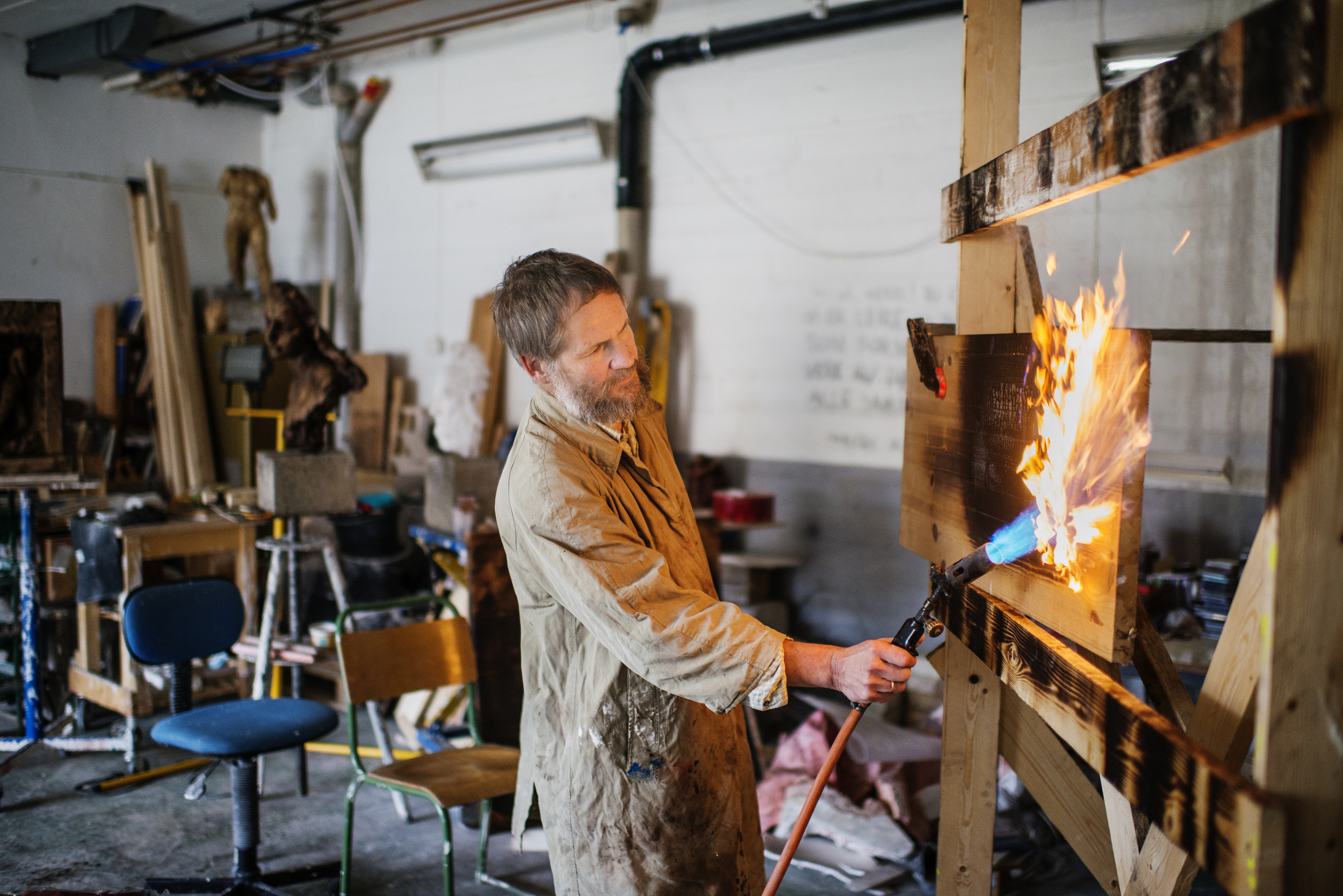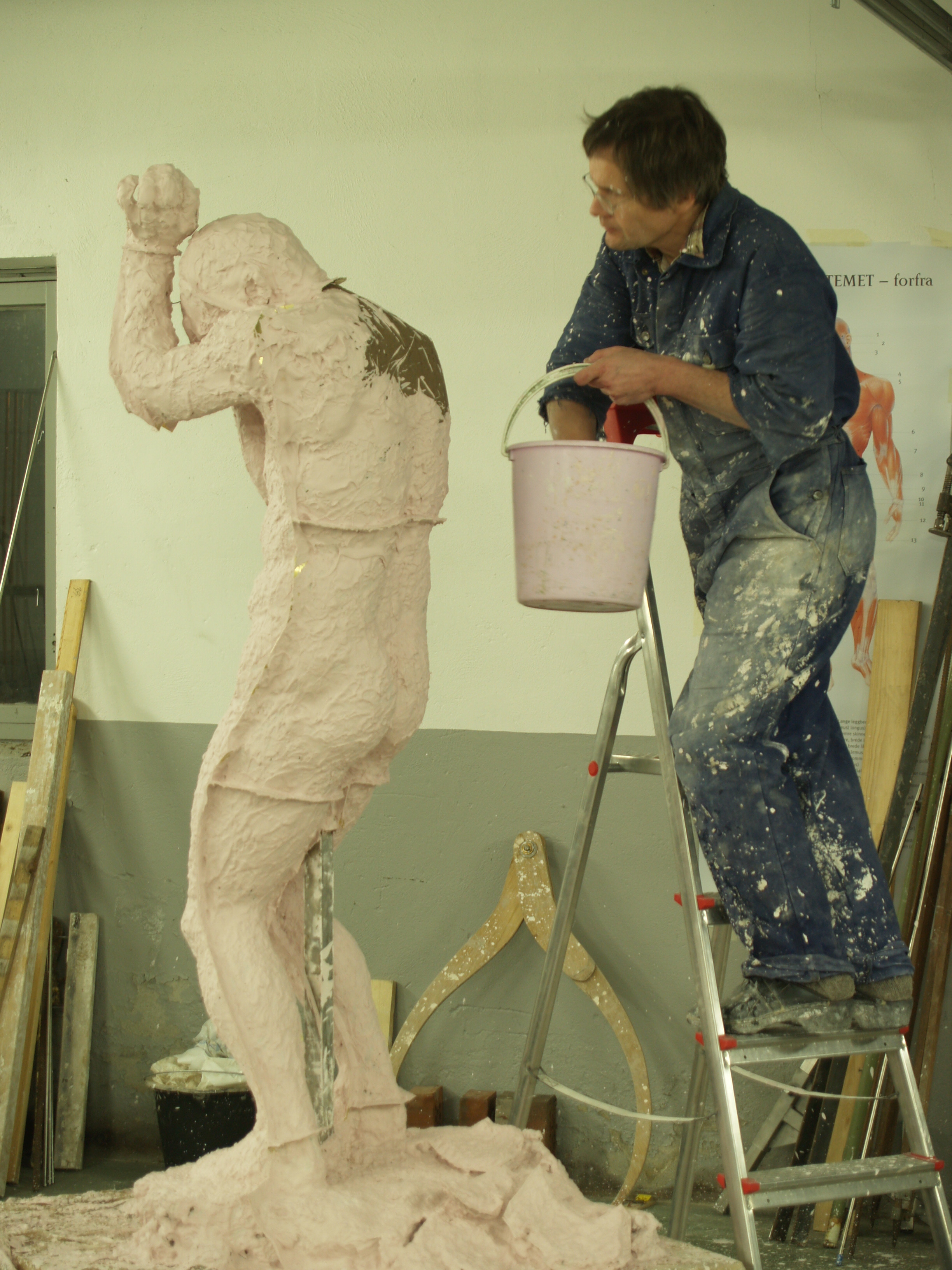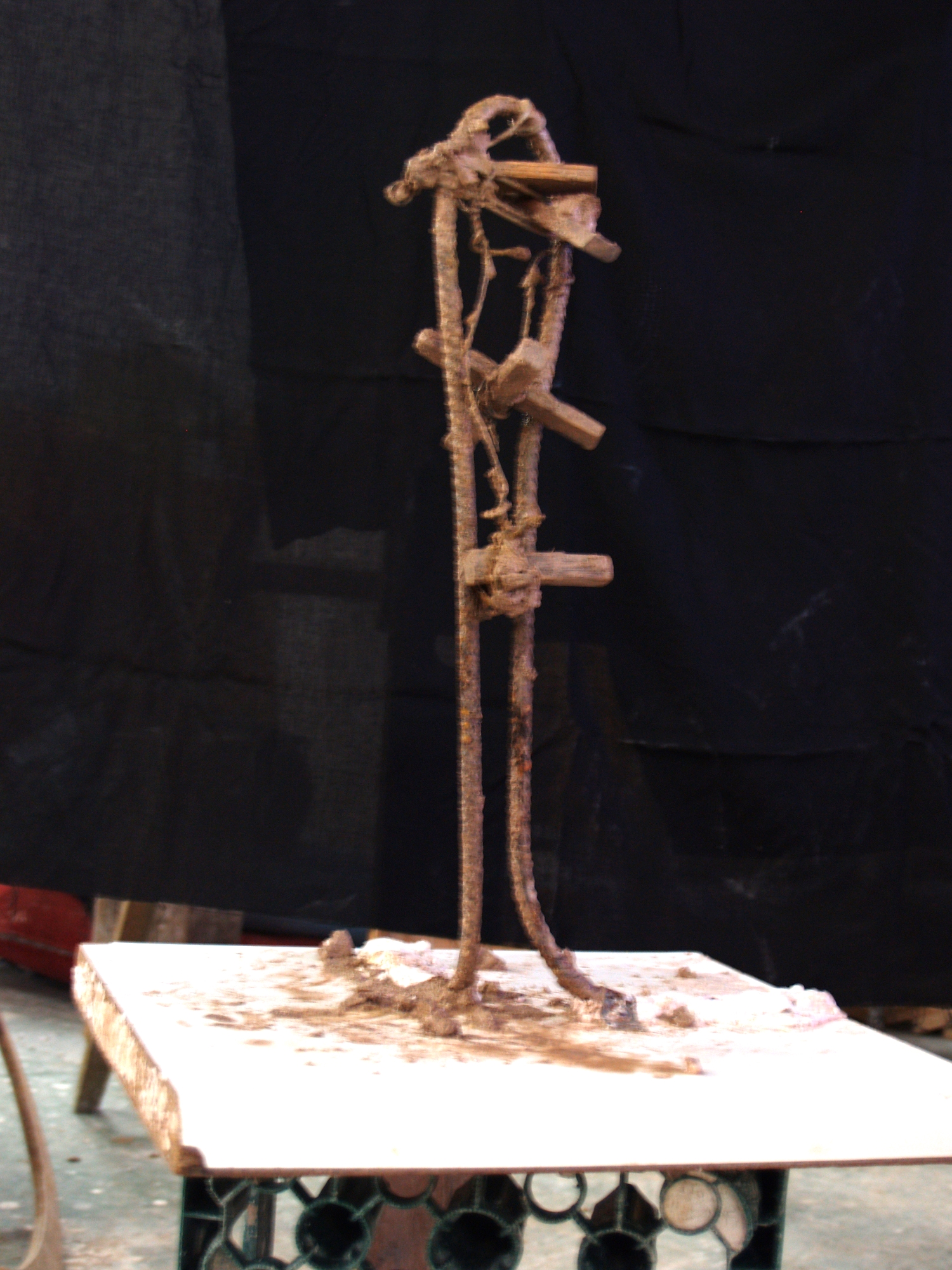
About
Ferdinand Wyller is progressing in the direction of giving his sculptures an increasingly impressionistic and literary expression. The surface is given a painterly touch. At the same time one can feel that the distribution of mass and the breaking point of the curve are well placed in his compositions. Putting these together can give a sculptural clarity, life and rhythm to the sculptures.
Wyller`s sculptures are cast in bronze both in Norway and in Italy. Most works displayed here can be made available upon request.
The artist has also developed a peculiar drawing technique which he calls “pyrography”. He burns wooden planks black. Then he sands them until the light/the motive becomes visible, burns them again etc. All of the pyrographs can be ordered as giclée prints and some as originals.
Trude Krane. Art historian:
TECHNIQUE
Wyller is a Norwegian artist who resides in Telemark. He is well educated from the Art Academy in Oslo. In addition, he has studied woodcarving, carpentry and graphic design. The artist is diverse and his work includes sculpture, drawing, charcoal and pyrography. Pyrography is an old technique where one uses various tools to burn or etch designs on wood or metal. Wyller has a distinctive technique in which he burns the wood black, then he produces a design with sandpaper. By using natural materials and ancient techniques, he comes in close contact with the creative process and brings to life the final expressions.
STYLE
Faced with Wyller’s pyrography you get an instant association with techniques that were highly welcome for some of the most prominent Renaissance artists. I refer here to Leonardo's sfumato, which he applied in the Mona Lisa, and chiaroscuro. These popular means, consisting of strong contrasts between light and dark (chiaroscuro) and smooth transitions between focal point and background (sfumato), help draw the viewer into the universe that the artist wants to convey. Leonardo's techniques were developed and frequently used in the Romantic style, including by the British artist William Turner. Wyller’s pyrography bring associations to Peder Balke’s scenes from Northern Norway, including Nordlys over klippekyst from ca. 1870, as well as northern Norwegian artists Espolin-Johnson and photographer / art photographer Kåre Kivijärvi, both with regard to the contrast of light and human struggle, and a hope for new and better times. Meanwhile Wyller has partly described his own art as kitsch, in line with Nerdrum's interpretation of the term.
THEME
Thematically Wyller is in a class by himself when he embarks with eternal questions in an otherwise secularized age. Wyller refuses to allow himself to be silenced and shaped by the capitalist powers of art and their identity effacing iron grip. He continues Kandinsky's desire to bring the spiritual dimension to art, but with other techniques and instruments. Wyller’s art is a criticism of the brainwashing by the mass media, and a liberation from art critics' definition of power. Countercurrently and steadfastly, he seeks to convey our lost, hidden and true identity. The focus is on the Christian message that one must become a new creature in order to recognise oneself as part of an organic and caring community. Wyller uses the freedom of art to break out of the tyrannic captivity of equality and competition. His designs convey a deeper knowledge of life, knowledge of life itself, deep wisdom that transcends human understanding. The artist conveys existential dichotomies and basic values hat require reflection from the hungry viewer, and he directs in this context a strong critique of prevailing social values like ndividualism, assertiveness, commercialization and capitalization of the human soul. Wyller’s images is a warning telling us that it is time to turn our backs on the Golden Calf and fixate on the sacrificial lamb, to find our footing on the foundation, rather than romp by the bottomless heights. This involves the puncturing of the ego balloon and a deep longing to care for and include each other.
SCULPTURE
Sculptures are a central part of Wyller’s art production. His sculptures have elements of Hellenistic sculpture storytelling and Michelangelo's urge to liberate matter’s inherent form, but we also see modern references such as Auguste Rodin’s and Alfredo Pina’s use of emotional naturalism to highlight the sculpture's characteristics. Such a combination provides a living dynamism to Wyller’s sculptures. The viewer gets an insight into the sculptural process of creation, and the essence of creation itself. The finished sculptures convey not only the core of the different characteristics, but also the ability, while engaging the viewer, to take a position on important personal and interpersonal themes. Wyller’s busts and sculptures can be considered as isolated fragments that are part of a larger story; the story of Man's creation, identity development, cognition, dependence, and free will. The human urge to find and realize ourselves can quickly become an unpleasant journey of the labyrinths of the soul. Struggling for our own success we are thrown into a social Darwinian struggle for existence, where the winner of the world's throne loses his heart and thus also the ability of true love. It is only when one realizes that a funeral of the need to realize oneself in one’s own strength is necessary, that one can find the true life that is connected to the power of God and the works of Christ. Then you can become part of a loving community where one lives for one another and bears one another's burdens.
You tube. Didgeridoo and cello by the artist:
https://www.google.com/url?sa=t&rct=j&q=&esrc=s&source=web&cd=1&cad=rja&uact=8&ved=0ahUKEwi65Pmng4vVAhWqCpoKHSHyAiMQuAIIJDAA&url=https%3A%2F%2Fwww.youtube.com%2Fwatch%3Fv%3DX-PRtrpstcE&usg=AFQjCNG59Su8Zlgmf3hc01TinluC6HAcbA


















